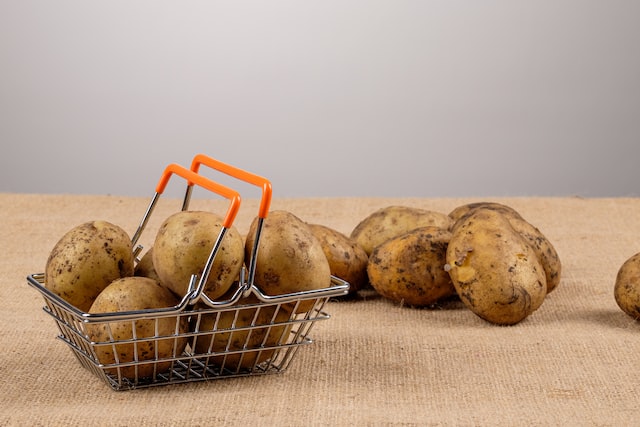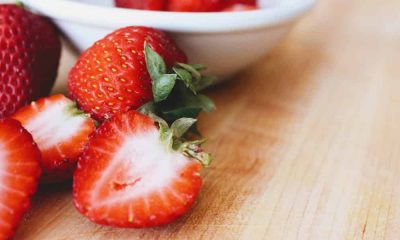Nutrition
Slice of Bread Nutrition Facts: Your Ultimate Guide
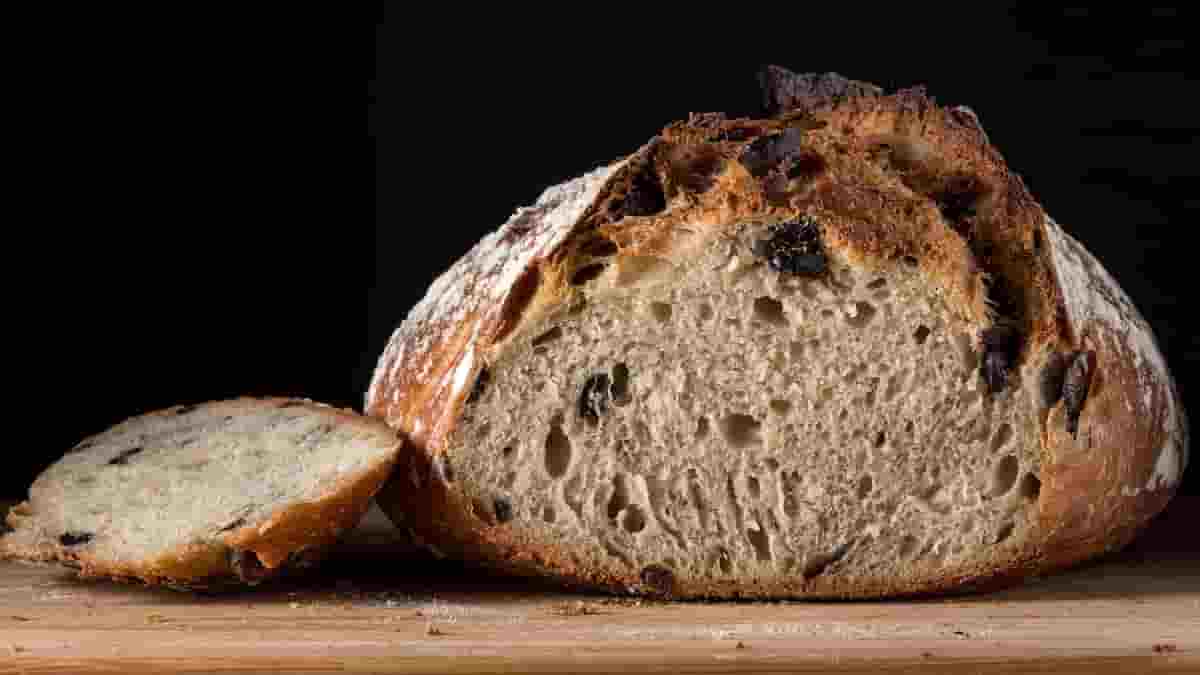
Here is your complete guide to a slice of bread nutrition facts
Understanding the Slice of Bread Nutrition Facts
Bread, a staple food in many cultures, has been a dietary cornerstone for centuries. But have you ever wondered about the nutritional value of a slice of bread? In this article, we’ll delve into the composition of bread, explore its macronutrient and micronutrient content, discuss the health benefits it offers, debunk common misconceptions, and answer frequently asked questions about bread nutrition. Let’s slice into the fascinating world of bread nutrition facts!
The Composition of Bread
Bread is a simple yet remarkable creation, comprising basic ingredients that work together to form a delicious and versatile staple. Here’s a breakdown of the key components:
- Flour: The primary ingredient in bread, flour, is typically derived from wheat or other grains like rye or barley. It provides the structure and texture to the bread.
- Yeast: Yeast is responsible for the fermentation process, allowing the dough to rise and giving bread its airy texture.
- Water: Water is essential for hydrating the flour and activating the yeast.
- Salt: Salt enhances the flavor of bread and helps control the fermentation process.
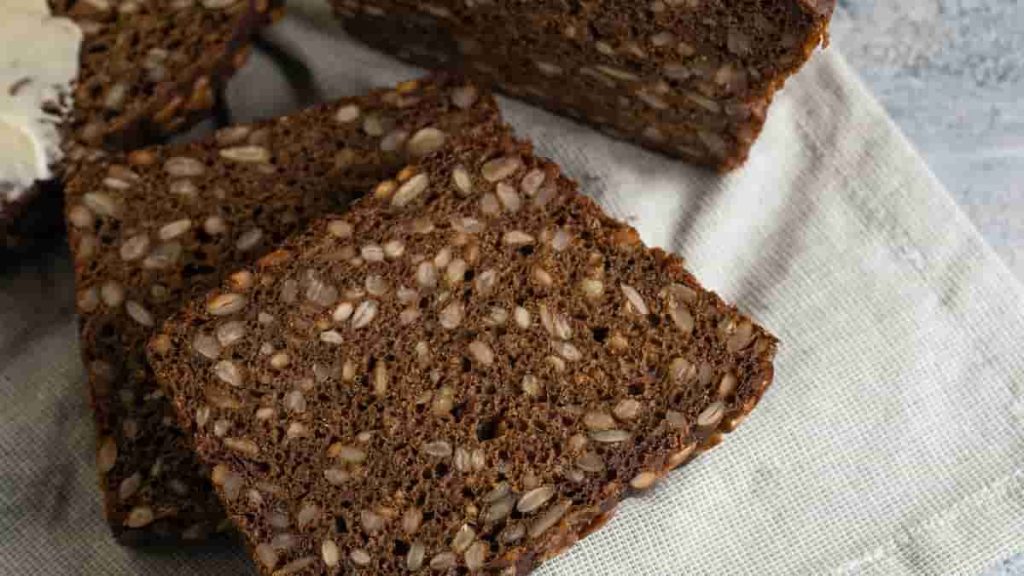
Macronutrients in Bread
When it comes to nutrition, bread predominantly provides three macronutrients:
- Carbohydrates: Carbohydrates are the main source of energy in bread. They include starches and dietary fiber, which is crucial for a healthy digestive system. Whole grain bread offers higher fiber content than refined bread.
- Protein: Protein is essential for growth, repair, and maintenance of body tissues. Although bread is not a significant protein source compared to meat or legumes, it still contributes a moderate amount.
- Fat: Fat content in bread is relatively low, with most of it being unsaturated fats.
To provide a comprehensive overview, let’s examine the typical nutritional profile of a slice of bread in the following table:
| Nutrient | Amount Per Slice |
|---|---|
| Calories | 80 |
| Carbohydrates | 15g |
| Protein | 3g |
| Fat | 1g |
| Fiber | 2g |
Micronutrients in Bread
In addition to macronutrients, bread contains essential micronutrients, including various vitamins and minerals. Here are some micronutrients commonly found in bread:
- B Vitamins: Bread is a notable source of several B vitamins, including thiamin (B1), riboflavin (B2), niacin (B3), and folate (B9). These vitamins play essential roles in metabolism, energy production, and cell function.
- Iron: Iron is vital for oxygen transport in the body and is found in small amounts in bread.
- Other Minerals: Bread also contains trace amounts of minerals like calcium, magnesium, and zinc.
It’s worth noting that the micronutrient content can vary depending on the type of bread and the fortification processes involved.
Health Benefits of Bread
Contrary to some misconceptions, bread can offer various health benefits as part of a balanced diet. Let’s explore these benefits:
- Dietary Fiber: Whole grain bread, in particular, is rich in dietary fiber, which aids in digestion, promotes feelings of fullness, and helps maintain a healthy weight.
- Nutrient Density: Bread, especially whole grain varieties, provides essential nutrients in a compact form, contributing to overall nutrient intake.
- Digestive Health: The fiber content in bread supports regular bowel movements and promotes a healthy gut microbiome.
- Weight Management: Opting for whole grain bread can help with weight management as it provides sustained energy and promotes satiety.
- Reduced Disease Risk: Research suggests that consuming whole grain bread may lower the risk of chronic diseases, including heart disease, type 2 diabetes, and certain cancers.
Common Misconceptions about Bread
Let’s address some common misconceptions surrounding bread and clarify their validity:
- Bread Causes Weight Gain: While excessive consumption of refined bread can contribute to weight gain, moderate portions of whole grain bread as part of a balanced diet are unlikely to cause weight gain.
- Bread is Unhealthy: Bread can be a healthy food choice when you opt for whole grain varieties that provide essential nutrients and fiber. Refined bread should be consumed in moderation.
- Gluten-Free Bread is Always Healthier: Gluten-free bread is necessary for individuals with gluten intolerance or celiac disease, but it’s not inherently healthier than regular bread. It’s important to choose gluten-free bread that is also nutrient-dense.

Comparing Slice of Bread with Other Bread Varieties
To provide a comprehensive understanding of the nutritional differences between various bread types, let’s compare a slice of bread with different bread varieties. The table below highlights the key nutritional components per slice for each bread type.
| Bread Variety | Calories | Carbohydrates (g) | Protein (g) | Fat (g) | Fiber (g) |
|---|---|---|---|---|---|
| White Bread | 80 | 15 | 3 | 1 | 2 |
| Whole Wheat | 70 | 12 | 4 | 1 | 2.5 |
| Multigrain | 80 | 14 | 3 | 1 | 3 |
| Rye Bread | 83 | 15 | 2 | 1 | 2.5 |
| Gluten-Free | 90 | 15 | 3 | 2 | 1.5 |
These values may vary slightly depending on the specific brand and recipe used. It’s important to note that while the calorie content may not differ significantly, the nutritional composition, such as carbohydrates, protein, fat, and fiber, can vary among different bread types. It is advisable to choose bread varieties that align with your specific dietary needs and preferences.
FAQs about Slice of Bread Nutrition Facts
How many calories are in a slice of bread?
A slice of bread typically contains around 80 calories.
Is bread high in carbohydrates?
Yes, bread is a significant source of carbohydrates, providing around 15 grams per slice.
Read Also: What Is the AIP Diet?
Can bread help with weight loss?
Choosing whole grain bread with higher fiber content can contribute to weight loss by promoting satiety and aiding in digestion.
Read Also: Are Push-Ups Good for Building Muscle?
Does bread contain gluten?
Most bread contains gluten, which is a protein found in wheat, but gluten-free bread options are available for those with gluten sensitivities or celiac disease.
Read Also: Nutrition Facts of Crab Meat.
How many calories are in a slice of bread?
A slice of bread typically contains around 80 calories. However, it’s important to note that the exact calorie content may vary slightly depending on the type of bread and the specific brand or recipe used.
Read Also: The Real Detox Tea.
How much does 1 slice of bread have?
In addition to calories, a typical slice of bread provides approximately 15 grams of carbohydrates, 3 grams of protein, 1 gram of fat, and 2 grams of dietary fiber. These values can vary slightly depending on the type of bread, such as whole grain or white bread.
Read Also: Bone Broth Protein vs Whey.
Is it okay to eat 1 slice of bread everyday?
Including one slice of bread in your daily diet is generally considered healthy and well-balanced. However, individual nutritional needs and dietary goals may vary. It’s essential to consider the overall composition of your diet and ensure it includes a variety of nutrient-rich foods in addition to bread. If you have specific dietary concerns or restrictions, it’s always best to consult with a healthcare professional or registered dietitian.
Read Also: Nutrition Facts of Brown Sugar.
What is the nutritional value of a slice of white bread?
A slice of white bread typically contains similar nutritional values to other types of bread. On average, it provides around 80 calories, 15 grams of carbohydrates, 3 grams of protein, 1 gram of fat, and 2 grams of dietary fiber. However, it’s worth noting that white bread is generally more refined and may have a lower fiber content compared to whole grain bread. Whole grain bread is often a healthier choice due to its higher fiber content and additional nutrients.
Read Also: Nutrition Facts of a Turkey Sandwich.
Are all bread types equally nutritious?
No, the nutritional value of bread can vary depending on factors like the type of flour used, level of processing, and additional ingredients. Whole grain bread is generally considered more nutritious than refined bread.
Read Also: The Nutrition Facts of a Peanut Butter and Jelly Sandwich.
Conclusion
Bread, a dietary staple enjoyed worldwide, offers more than just a comforting taste. Understanding the slice of bread nutrition facts can help you make informed choices about your diet. With its macronutrient and micronutrient composition, potential health benefits, and debunking of common misconceptions, bread can be a valuable addition to a balanced and healthy lifestyle. So, next time you enjoy a slice of bread, savor it not only for its taste but also for the nourishment it provides.
Read Also: Nutrition Facts of Raw Milk.
Remember, whether you prefer a classic white loaf or a hearty whole grain option, enjoying bread in moderation as part of a well-rounded diet is the key to reaping its nutritional benefits.
Read Also: Nutrition Facts of Rainier Cherries.
Nutrition
High Calorie Fruit Smoothies for Building Muscle
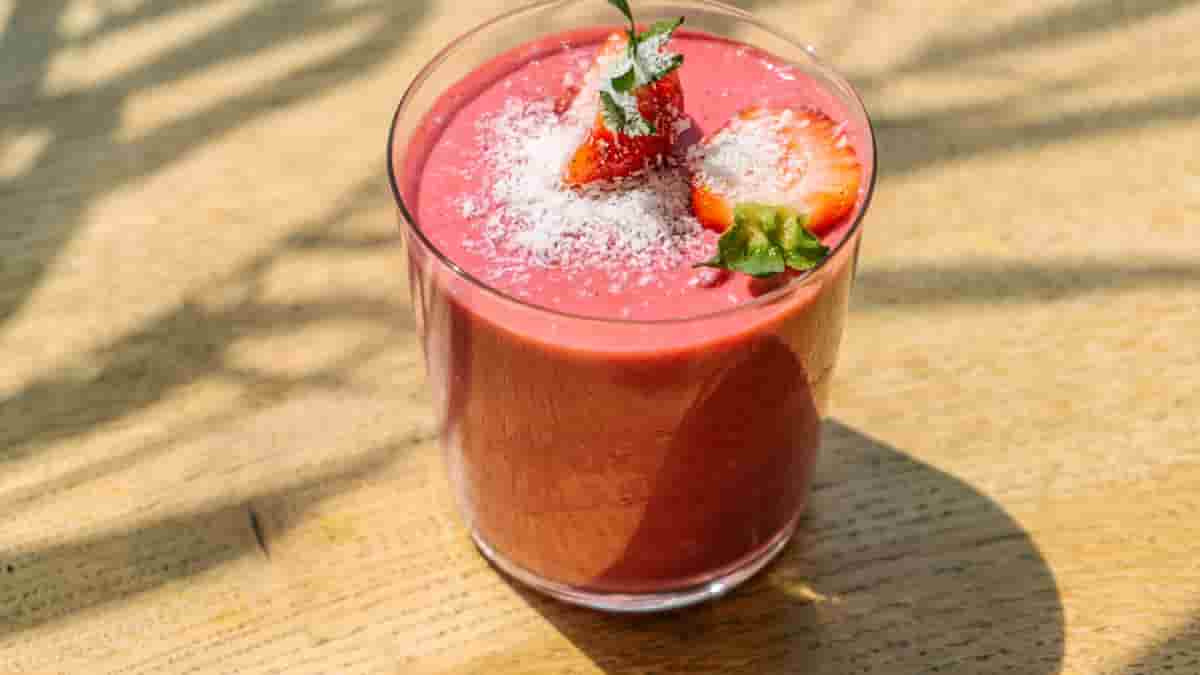
Here is your complete guide to high calorie fruit smoothies
Introduction to High Calorie Fruit Smoothies
High calorie fruit smoothies are an excellent choice for individuals looking to gain weight. These smoothies offer a concentrated source of calories in an easily digestible and refreshing format. With the right combination of high-calorie ingredients, you can create delicious and nutritious smoothies that support weight gain. In this comprehensive guide, we will explore the best high calorie fruit smoothies for weight gain, including recipes and tips for customization.
High Calorie Fruit Smoothie Ingredients and Nutritional Benefits
| Ingredient | Calories (per serving) | Nutritional Benefits |
|---|---|---|
| Banana | 105 calories | High in potassium, fiber, and natural sweetness |
| Mango | 99 calories | Rich in vitamins A and C, and provides a tropical flavor |
| Avocado | 320 calories | Packed with healthy fats, fiber, and creamy texture |
| Blueberries | 84 calories | Antioxidant-rich and provide a burst of sweetness |
| Walnuts | 185 calories | High in healthy fats, protein, and fiber |
| Almond Butter | 98 calories | Provides a creamy, nutty flavor and healthy fats |
| Greek Yogurt | 100 calories | Contributes protein and a thick, creamy consistency |
| Chia Seeds | 137 calories | Offer fiber, protein, and healthy omega-3 fatty acids |
| Flax Seeds | 55 calories | Rich in fiber, protein, and omega-3s |
| Oats | 150 calories | Provide complex carbohydrates, fiber, and a hearty texture |
| Spinach | 7 calories | Nutrient-dense and adds a boost of vitamins and minerals |
| Kale | 33 calories | High in fiber, vitamins, and minerals |
High Calorie Fruit Smoothies for Weight Gain
Recipe 1: Banana Nut Smoothie
- 2 ripe bananas
- 1 handful of walnuts
- 1 cup Greek yogurt
- 1 tablespoon almond butter
- 1 cup almond milk
This smoothie is a powerhouse of calories and nutrients. Bananas provide a natural sweetness and a boost of potassium, while walnuts and almond butter add healthy fats and protein to support muscle growth. Greek yogurt contributes a creamy texture and additional protein, and almond milk helps to blend everything together.
Recipe 2: Mango Avocado Green Smoothie
- 1 ripe mango
- 1/2 avocado
- 1 handful of spinach
- 1 tablespoon chia seeds
- 1 cup coconut water
- 1 squeeze of lime juice
This vibrant green smoothie combines the creaminess of avocado with the sweetness of mango. Spinach adds a nutrient-dense boost, while chia seeds provide fiber and healthy fats. Coconut water hydrates and adds a refreshing touch, and the lime juice helps to balance the flavors.
Recipe 3: Peanut Butter Blueberry Power Smoothie
- 1 cup blueberries
- 1 tablespoon peanut butter
- 1 scoop vanilla protein powder
- 1 cup almond milk
- 1 handful of ice
This smoothie is a perfect post-workout option, with a combination of protein-rich peanut butter, antioxidant-packed blueberries, and a scoop of vanilla protein powder. The almond milk provides a creamy base, and the ice helps to create a thick, milkshake-like texture.
Tips for Customization
Customizing your high calorie fruit smoothies can help you create unique flavor combinations and tailor the nutritional profile to your specific needs. Here are some tips to consider:
- Add Superfoods: Incorporate superfoods like spirulina, maca powder, cacao nibs, goji berries, or acai powder to enhance the nutritional benefits of your smoothie.
- Incorporate Fiber-Rich Ingredients: Add chia seeds, flax seeds, oats, or leafy greens like spinach or kale to increase the fiber content of your smoothie.
- Adjust Sweetness: Use honey, maple syrup, or dates to adjust the sweetness levels of your smoothie.
- Experiment with Flavors: Try different fruits, nuts, and spices to create unique flavor combinations that suit your taste preferences.
Smoothie Preparation Time-Saving Tips
| Tip | Benefit |
|---|---|
| Prepare Smoothie Mixes in Advance | – Saves time when blending smoothies – Ensures convenient high-calorie options – Facilitates effective meal planning |
| Use Frozen Fruit | – Eliminates the need to chop and prepare fresh fruit – Provides a thick, creamy texture when blended |
| Keep a Well-Stocked Pantry | – Allows you to quickly assemble smoothie ingredients – Reduces the need for last-minute trips to the grocery store |
| Invest in a High-Quality Blender | – Ensures a smooth, consistent texture in your smoothies – Reduces the time and effort required to blend ingredients |
| Batch Blend Multiple Servings | – Saves time by preparing multiple servings at once – Allows for easy portioning and storage of leftovers |
Preparing Smoothie Mixes in Advance
Preparing high calorie fruit smoothie mixes in advance can be a game-changer for weight gain. Here are the benefits and instructions:
Benefits of Preparing Smoothie Mixes in Advance
- Saves Time: Having pre-made smoothie mixes on hand can significantly reduce the time and effort required to prepare a nutritious smoothie.
- Ensures Convenient Options: With pre-made mixes, you can quickly blend a smoothie whenever you need a high-calorie boost, making it easier to incorporate them into your daily routine.
- Allows for Easy Meal Planning: Preparing smoothie mixes in advance can help you plan your meals and snacks more effectively, ensuring you have a steady supply of high-calorie options.
Instructions for Preparing Smoothie Mixes in Advance
- Combine your chosen fruits, proteins, and add-ins in freezer-safe bags or containers.
- Store the pre-made mixes in the freezer for up to 3 months.
- When ready to enjoy, simply grab a pre-made mix and blend it with your chosen liquid, such as milk, yogurt, or juice.
Fiber-Rich Ingredients and Their Benefits
| Ingredient | Fiber Content (per serving) | Benefits |
|---|---|---|
| Chia Seeds | 10 grams per tablespoon | – Supports digestive health – Provides sustained energy release – Contributes to overall well-being |
| Flax Seeds | 3 grams per tablespoon | – Promotes regularity – Enhances nutrient absorption – Offers anti-inflammatory properties |
| Oats | 4 grams per 1/2 cup | – Helps to regulate blood sugar levels – Supports heart health – Contributes to a feeling of fullness |
| Spinach | 2.4 grams per cup | – Boosts nutrient density of smoothies – Provides a range of vitamins and minerals – Adds a nutrient-dense boost |
| Kale | 2.4 grams per cup | – Enhances the nutritional profile of smoothies – Offers antioxidant and anti-inflammatory benefits – Adds a vibrant, leafy green flavor |
The Role of Fiber in High Calorie Fruit Smoothies
Fiber is an essential component of a balanced diet, and it plays a crucial role in high calorie fruit smoothies as well. Here’s why fiber is important and which ingredients can provide a fiber-rich boost:
Benefits of Fiber in High Calorie Fruit Smoothies
- Maintains Digestive Health: Fiber helps to regulate bowel movements and supports overall digestive function, which is important when consuming a high-calorie diet.
- Provides Sustained Energy: Fiber-rich ingredients can help to slow the absorption of sugars, providing a more sustained energy release throughout the day.
- Supports Overall Well-being: Adequate fiber intake is associated with a range of health benefits, including improved heart health and better blood sugar control.
Fiber-Rich Ingredients for High Calorie Fruit Smoothies
- Chia Seeds: Chia seeds are an excellent source of fiber, providing around 10 grams per tablespoon.
- Flax Seeds: Flax seeds are another fiber-rich option, with around 3 grams of fiber per tablespoon.
- Oats: Oats are a great way to add both fiber and complex carbohydrates to your smoothie.
- Spinach: Leafy greens like spinach are packed with fiber, as well as a host of other essential vitamins and minerals.
- Kale: Similar to spinach, kale is a nutrient-dense, fiber-rich addition to high calorie fruit smoothies.
Customization Options for High Calorie Fruit Smoothies
| Customization Tip | Potential Benefits |
|---|---|
| Add Superfoods | – Enhance the nutritional value of your smoothie – Provide a concentrated source of vitamins, minerals, and antioxidants |
| Incorporate Fiber-Rich Ingredients | – Support digestive health and regularity – Provide a feeling of fullness and sustained energy |
| Adjust Sweetness | – Tailor the flavor profile to your personal preferences – Experiment with different natural sweeteners |
| Try Unique Flavor Combinations | – Discover new and exciting taste experiences – Prevent flavor fatigue and keep your taste buds engaged |
Fruits to Avoid for High Calorie Fruit Smoothies
Some fruits are naturally low in calories, which can make them less effective for high-calorie fruit smoothies. Here are some fruits to avoid or limit in your smoothies:
1. Strawberries
Strawberries are a popular fruit, but they are relatively low in calories, with only about 33 calories per cup. While they do contain some fiber and antioxidants, they may not provide the calorie boost you need for a high-calorie smoothie.
2. Pineapple
Pineapple is another fruit that is relatively low in calories, with about 51 calories per cup. While it does contain some vitamin C and manganese, it may not be the best choice for a high-calorie smoothie.
3. Kiwi
Kiwi is a nutrient-rich fruit, but it is also relatively low in calories, with about 46 calories per cup. If you’re looking for a high-calorie smoothie, you may want to choose other fruits that are higher in calories.
High-Fiber Fruits
Some fruits are high in fiber, which can be beneficial for digestive health. However, high-fiber fruits can also make your smoothies thicker and more filling, which may not be ideal for a high-calorie smoothie. Here are some high-fiber fruits to avoid or limit:
1. Prunes
Prunes are a type of dried plum that is high in fiber and calories. However, they can also be quite filling and may not provide the calorie boost you need for a high-calorie smoothie.
2. Apricots
Apricots are a nutrient-rich fruit that is high in fiber and antioxidants. However, they are also relatively low in calories, with about 17 calories per cup. If you’re looking for a high-calorie smoothie, you may want to choose other fruits that are higher in calories.
3. Peaches
Peaches are a sweet and juicy fruit that is high in fiber and antioxidants. However, they are also relatively low in calories, with about 39 calories per cup. If you’re looking for a high-calorie smoothie, you may want to choose other fruits that are higher in calories.
Fruits with Low Water Content
Some fruits have low water content, which can make them thicker and more filling in your smoothies. Here are some fruits to avoid or limit:
1. Dates
Dates are a sweet and nutritious fruit that are high in fiber and antioxidants. However, they are also relatively low in water content, which can make them thicker and more filling in your smoothies.
2. Figs
Figs are a nutrient-rich fruit that are high in fiber and antioxidants. However, they are also relatively low in water content, which can make them thicker and more filling in your smoothies.
3. Raisins
Raisins are a type of dried grape that is high in fiber and antioxidants. However, they are also relatively low in water content, which can make them thicker and more filling in your smoothies.
Common Mistakes to Avoid
Using Low-Calorie Bases
Avoid using water, low-fat milk, or other low-calorie bases if you aim to create a high-calorie smoothie. Instead, opt for whole milk, coconut milk, or full-fat yogurt to ensure you’re getting enough calories.
Overloading with Sugar
While sweeteners can enhance the taste, it’s important not to overload your smoothie with sugar. Excessive sugar can lead to unwanted weight gain and energy crashes. Use natural sweeteners like honey, maple syrup, or dates in moderation.
Skipping Protein
Protein is essential for muscle repair and growth, especially if you’re consuming high-calorie smoothies as part of a fitness regimen. Always include a protein source, such as Greek yogurt, protein powder, or nut butters.
Read Also: Cable Machine Exercises for Arms.
High Calorie Fruit Smoothies FAQs
As you explore the world of high calorie fruit smoothies, you may have some questions. Here are some common queries and their answers:
What are the best fruits for high calorie fruit smoothies?
Bananas, mangoes, blueberries, and avocados are all excellent choices for high calorie fruit smoothies. These fruits are not only high in calories but also packed with essential nutrients.
Read Also: CrossFit Labor Day Workout.
Can I use protein powder in high calorie fruit smoothies?
Yes, protein powder can be a great addition to high calorie fruit smoothies. Incorporating a scoop of protein powder can help to enhance the protein content of your smoothie, which is important for supporting muscle growth and recovery.
Read Also: 20 Minute AMRAP CrossFit.
Are high calorie fruit smoothies suitable for everyone?
While high calorie fruit smoothies can be a beneficial addition to a weight gain or muscle-building regimen, it’s important to consult with a healthcare professional before incorporating them into your diet, especially if you have specific dietary needs or restrictions.
Read Also: The Surprising Health Benefit of Celery Tea.
Conclusion
High calorie fruit smoothies are a delicious and nutritious way to support weight gain. By incorporating high-calorie ingredients and superfoods, you can create smoothies that not only taste great but also provide essential nutrients. Remember to customize and experiment with different flavors to find the perfect smoothie for your needs. With a little creativity and planning, you can enjoy the benefits of high calorie fruit smoothies as part of a balanced and effective weight gain strategy.
Read Alos: CrossFit 911 Workout.
Nutrition
Is Papaya Keto Friendly? Unveiling the Truth!
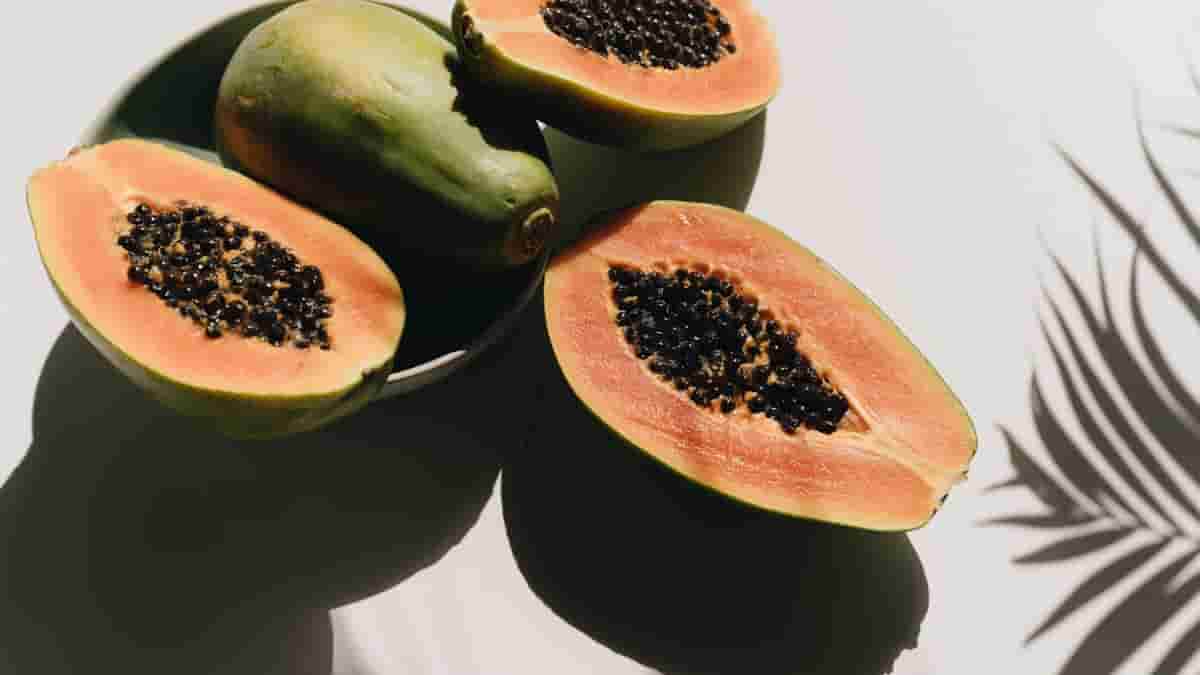
Here is your complete guide to is papaya keto friendly
Introduction to Is Papaya Keto Friendly
Is papaya keto friendly? The ketogenic diet, often referred to simply as keto, emphasizes low carbohydrate intake, moderate protein consumption, and high fat intake. This macronutrient balance is designed to shift the body into a metabolic state known as ketosis, where fat becomes the primary fuel source instead of carbohydrates. Understanding which foods fit into this diet is crucial for maintaining ketosis.
Papaya, with its vibrant orange flesh and sweet taste, is packed with essential nutrients. But is papaya keto friendly? In this article, we will mention this question several times to ensure comprehensive coverage. Let’s dive into the specifics of papaya’s nutritional content, its benefits, potential drawbacks, and how it can fit into a keto diet.
Papaya Nutrition Facts
| Nutrient | Amount (per 100g) |
|---|---|
| Vitamin C | 100% DV |
| Vitamin A | 20% DV |
| Potassium | 10% DV |
| Fiber | 5% DV |
Papaya’s Nutritional Profile
Before we explore whether papaya is keto friendly, it’s essential to understand its nutritional profile. Papaya is a tropical fruit rich in vitamins, minerals, and antioxidants. Here’s a breakdown of its macronutrients:
Macronutrient Breakdown
| Macronutrient | Amount (per 100g) |
|---|---|
| Carbohydrates | 11.7g |
| Protein | 0.6g |
| Fat | 0.2g |
Papaya is primarily composed of carbohydrates, with a significant portion being fiber. This high fiber content can be beneficial for digestive health, but it also raises concerns about its compatibility with the keto diet.
Fiber Content
| Fiber Type | Amount (per 100g) |
|---|---|
| Soluble Fiber | 2.5g |
| Insoluble Fiber | 3.2g |
Papaya’s high fiber content can be both beneficial and detrimental to the keto diet. On one hand, fiber can help regulate blood sugar levels and promote satiety. On the other hand, it can also contribute to a higher carbohydrate count, which may not align with the keto diet’s strict macronutrient ratios.
Papaya Health Benefits
Reduced Inflammation and Cancer Prevention
Papaya is rich in antioxidants, particularly lycopene, which has been linked to reduced inflammation and cancer prevention. Studies have shown that papaya may help reduce the risk of various cancers, including prostate and breast cancer.
Improved Digestion and Gut Health
Papaya’s high fiber content makes it an excellent aid for maintaining a healthy digestive system and preventing constipation. The fruit also contains papain, an enzyme that helps break down protein chains in muscle, making it a popular ingredient in meat tenderizers.
Boosted Immune Function and Eye Health
Papaya is an excellent source of vitamin C, which supports immune health and can help fight off illnesses and infections. The fruit also contains antioxidants like lycopene and zeaxanthin, which may protect the retina against inflammation and oxidative stress, contributing to improved vision and the prevention of night blindness.
Heart Health and Diabetes Management
Papaya’s antioxidants and potassium content may contribute to heart health by reducing the risk of cardiovascular disease. Additionally, the fruit’s fiber and water content can help manage blood sugar levels in individuals with diabetes.
Skin and Hair Health
Papaya’s vitamin A content is essential for sebum production, keeping hair moisturized, and promoting growth. The fruit’s antioxidants and anti-inflammatory properties may also help soothe and calm the skin, reducing the appearance of acne and other skin issues.
Menstrual Health and Liver Function
Papaya seeds have been known to help induce menstruation and manage menstrual cramps. The seeds also contain vital nutrients that can help manage liver cirrhosis and other liver-related diseases.
Antifungal and Antiparasitic Properties
Papaya seeds have been shown to have strong antifungal properties, which can help reduce or prevent the development of dandruff. The seeds also have anti-helminthic properties, which may aid in parasitic worm infections.
Overall Nutritional Profile
Papaya is a nutrient-dense fruit that provides a range of essential vitamins and minerals, including vitamins A and C, potassium, and fiber. The fruit is also low in calories and high in water content, making it an excellent addition to a healthy diet.
Is Papaya Keto Friendly?
So, is papaya keto friendly? The answer lies in understanding the keto diet’s macronutrient ratios. The standard keto diet recommends a ratio of:
Keto Diet Macronutrient Ratios
| Macronutrient | Percentage |
|---|---|
| Fat | 70-80% |
| Protein | 15-20% |
| Carbohydrates | 5-10% |
Papaya’s nutritional profile falls short of these ratios, with a significant portion of its carbohydrates coming from fiber. However, this doesn’t necessarily mean papaya is off-limits. With proper portion control and strategic meal planning, papaya can be incorporated into a keto diet.
Strategies for Including Papaya in a Keto Diet
If you love papaya and want to include it in your keto diet, here are some strategies:
- Small Portions: Limit your serving size to a small portion to manage carb intake.
- Pair with Fat: Combine papaya with high-fat foods like Greek yogurt or avocado to balance macros.
- Occasional Treat: Treat papaya as an occasional treat rather than a staple.
Keto-Friendly Ways to Enjoy Papaya
| Strategy | Description |
|---|---|
| Small Portions | Keep servings small to manage carb intake |
| Pair with Fat | Combine with high-fat foods like Greek yogurt |
| Occasional Treat | Enjoy as an occasional indulgence, not a staple |
Keto-Friendly Alternatives to Papaya
If you find that papaya doesn’t fit well into your keto plan, consider these lower-carb alternatives:
- Berries (e.g., raspberries, blackberries): Lower in carbs and high in fiber.
- Watermelon: Lower in net carbs compared to papaya.
- Cantaloupe: Another low-carb fruit option.
Low-Carb Fruit Alternatives
| Fruit | Net Carbs per 100g |
|---|---|
| Raspberries | 5.5g |
| Blackberries | 5.0g |
| Watermelon | 7.1g |
| Cantaloupe | 8.2g |
Papaya Comparison to Other Fruits
| Nutrient | Papaya | Mango | Apple | Pineapple |
|---|---|---|---|---|
| Calories (per 100g) | 43 | 62 | 52 | 50 |
| Carbohydrates (g) | 10.8 | 15 | 13.8 | 13.1 |
| Fiber (g) | 1.7 | 1.6 | 2.4 | 1.4 |
| Vitamin C (mg) | 60.9 | 36.4 | 4.4 | 47.8 |
| Vitamin A (μg) | 47 | 54 | 3 | 58 |
| Folate (μg) | 37 | 43 | 5 | 18 |
| Glycemic Index | 61 (medium) | 51 (low) | 39 (low) | 66 (medium) |
Key Differences:
- Mango: Higher in calories, carbohydrates, and vitamin A, but lower in vitamin C compared to papaya.
- Apple: Lower in most vitamins and minerals, but higher in fiber compared to papaya.
- Pineapple: Similar in calories and carbohydrates, but higher in vitamin C and lower in fiber compared to papaya.
Overall, papaya stands out for its high vitamin C content, moderate glycemic index, and balanced nutritional profile compared to these other popular fruits.
Practical Applications
Portion Control
To make papaya a part of your keto diet, it’s essential to control your portion sizes. Aim for 1/4 cup or less per serving to keep your carbohydrate intake in check.
Combining Papaya with Other Foods
Papaya can be combined with other keto-friendly foods to balance its nutritional profile. Here are some examples:
- Papaya and Avocado Salad: Combine diced papaya with avocado, bacon, and a sprinkle of red pepper flakes for a delicious and keto-friendly salad.
- Papaya Smoothie: Blend papaya with coconut milk, protein powder, and a scoop of MCT oil for a creamy and filling smoothie.
Papaya and Avocado Salad Recipe
| Ingredient | Amount |
|---|---|
| Papaya | 1/2 cup diced |
| Avocado | 1/2 cup diced |
| Bacon | 2 slices cooked and crumbled |
| Red Pepper Flakes | 1/4 teaspoon |
| Salt | 1/4 teaspoon |
| Pepper | 1/4 teaspoon |
Papaya Smoothie Recipe
| Ingredient | Amount |
|---|---|
| Papaya | 1/2 cup diced |
| Coconut Milk | 1/2 cup |
| Protein Powder | 1 scoop |
| MCT Oil | 1 tablespoon |
| Ice | 1 cup |
Potential Drawbacks
While papaya can be a part of a keto diet, there are some potential drawbacks to consider:
- Digestive Issues: Papaya’s high fiber content can cause digestive issues in some individuals, particularly those who are new to the keto diet.
- Blood Sugar Spikes: Papaya’s natural sugars can cause blood sugar spikes, which may not align with the keto diet’s goal of maintaining stable blood sugar levels.
FAQs
Can I eat papaya on a keto diet?
Yes, papaya can be a part of a keto diet in moderation.
Read Also: Keto Cabbage Alfredo.
How much papaya can I eat on a keto diet?
Aim for 1/4 cup or less per serving to keep your carbohydrate intake in check.
Read Also: Keto Pistachio Ice Cream.
Can I combine papaya with other fruits on a keto diet?
Yes, but be mindful of the overall carbohydrate content.
Read Also: Keto Lemon Ricotta Pancakes.
Are there any potential drawbacks to eating papaya on a keto diet?
Yes, papaya’s high water content can lead to digestive issues in some individuals.
Read Also: Best Keto Shakes for Weight Loss.
Can I use papaya in keto recipes?
Yes, papaya can be used in smoothies, salads, and as a topping for keto meals.
Read Also: Low Carb Revelation Recipes.
Conclusion
In conclusion, is papaya keto friendly? The answer is nuanced. While papaya offers numerous health benefits and can be enjoyed in moderation on a keto diet, its relatively high carbohydrate content necessitates careful portion control. For those strictly adhering to keto guidelines, considering lower-carb fruits may be more practical. Always consult with a healthcare professional or a registered dietitian to tailor dietary choices to your specific needs and goals.
Read Also: The Surprising Health Benefit of Celery Tea.
By understanding the nutritional profile of papaya and its place within a ketogenic diet, you can make informed decisions that support your health and dietary objectives.
Read Also: Keto Cheese Fondue.
Nutrition
Keto Cheese Fondue Recipe: The Ultimate Low-Carb Delight
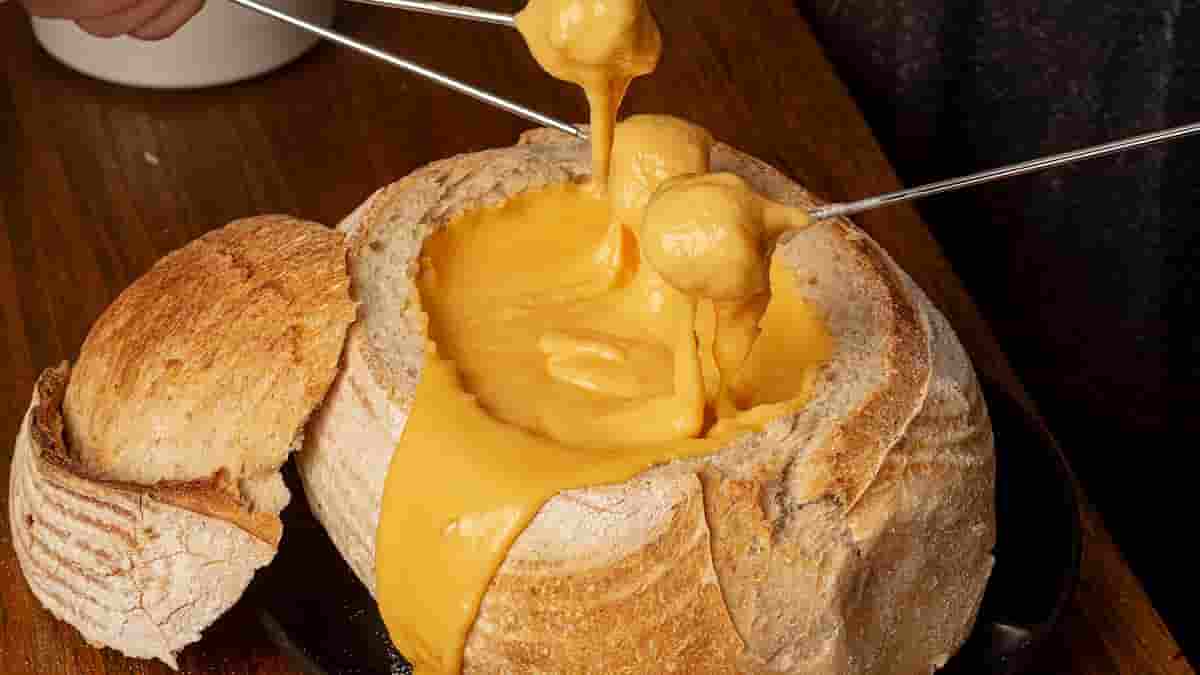
Here is your complete guide to keto cheese fondue
Introduction to Keto Cheese Fondue
Are you looking for a delicious, low-carb dish that is perfect for gatherings and cozy nights in? Look no further than keto cheese fondue! This mouthwatering, creamy dip is not only satisfying but also fits perfectly into a keto diet. Fondue has a rich history dating back to Switzerland, where it became a staple during long, cold winters. Today, we’re giving it a keto-friendly twist that maintains its deliciousness while being health-conscious.
The keto diet focuses on high-fat, low-carb foods, making keto cheese fondue an ideal dish. It satisfies your cheese cravings, is easy to make, and can be customized to suit various tastes. In this guide, we’ll explore everything you need to know about keto cheese fondue, from ingredients and equipment to step-by-step instructions and tips for hosting the perfect fondue party.
What is Keto Cheese Fondue?
Keto cheese fondue is a delightful and rich snack perfect for low-carb enthusiasts. It is a variation of the classic Swiss dish, made with a blend of cheeses and served with vegetables and meats. This indulgent treat is an excellent option for those following a low-carb diet, as it is rich in fat and low in carbohydrates.
Keto Cheese Fondue Nutrition Facts
| Nutrient | Amount | % Daily Value |
|---|---|---|
| Calories | 75 | 3.75% |
| Fat | 5.9g | 9.23% |
| Carbohydrates | 0.7g | 0.23% |
| Protein | 6.2g | 12.4% |
| Saturated Fat | 3.37g | 16.85% |
| Cholesterol | 0mg | 0% |
| Sodium | 15mg | 0.62% |
| Total Sugars | 0.5g | 0.12% |
Note: The nutrition facts are based on the average values for a slice of keto cheese fondue. The exact values may vary depending on the specific recipe and ingredients used.
Additional Information:
- Keto-Friendly: Yes, keto cheese fondue is a keto-friendly food due to its high fat and low carb content.
- High Protein: Yes, keto cheese fondue is a good source of protein, making it a suitable option for those following a high-protein diet.
- Low Sugar: Yes, keto cheese fondue is low in sugar, making it a good choice for those trying to reduce their sugar intake.
- High Saturated Fat: Yes, keto cheese fondue is high in saturated fat, which is a key component of a ketogenic diet.
Related Foods:
- Fresh Cheese: Similar to keto cheese fondue, fresh cheese is a good source of protein and low in carbohydrates.
- Panela Cheese: Panela cheese is another keto-friendly option that is high in protein and low in carbohydrates.
Tracking and Logging:
- Fitia: You can log this food and track your calories in Fitia to obtain a calories and macronutrients plan to lose fat or gain muscle.
Benefits of Keto Cheese Fondue
Low-Carb
Keto cheese fondue is an excellent option for those following a low-carb diet, as it is rich in fat and low in carbohydrates. This makes it an ideal snack for those looking to manage their blood sugar levels and support weight loss.
High-Fat
The high-fat content in keto cheese fondue helps to increase satiety and support weight loss. This is because fat takes longer to digest, keeping you feeling fuller for longer.
Flavorful
The combination of cheeses and seasonings in keto cheese fondue creates a rich and flavorful snack. This makes it an excellent option for those looking to add some excitement to their low-carb diet.
Ingredients and Equipment
Cheese
Choose a blend of cheeses, such as cheddar, Parmesan, and Gruyère. These cheeses provide a rich and creamy base for your keto cheese fondue.
Cream and Butter
Use heavy cream and unsalted butter for a rich and creamy fondue. These ingredients help to create a smooth and velvety texture.
Seasonings
Add salt, pepper, and paprika for flavor. These seasonings enhance the flavor of the cheese and add a smoky depth.
Equipment
Use a fondue pot or a small saucepan with a heat source. This ensures that your cheese fondue is heated evenly and prevents it from burning.
Keto Cheese Fondue Recipes
Recipe 1: Easy Keto Cheese Fondue Recipe
Ingredients:
- 0.33 lb Gouda cheese
- 0.33 lb Gruyere Cheese
- 0.33 lb Fontina Cheese
- 2 oz cream cheese
- 1 cup Dry white wine
- 1 garlic clove minced
- 1 tbs lemon juice
- 1 tbs Brandy I used Calvados
- 1 tsp Dijon mustard
- 1/8 tsp nutmeg
- 1 loaf Ketonia Baking Mix – Bread Cut into cubes
Instructions:
- Using a box shredder or a food processor, shredded your cheeses and combine in a bowl.
- In a saucepan over medium heat, bring wine, garlic and lemon juice to a simmer.
- Whisk in cream cheese.
- Keep pan at a simmer, over low heat. Sprinkle cheese, by small handfuls into wine mixture. Stir or whisk till combined and melted. Continue to add cheese, a bit at a time waiting until melted to add more. This will keep the fondue from getting clumpy.
- When cheeses are combined and melted, add brandy and mustard and grated nutmeg. Whisk to combine.
- Pour into warm bowl or fondue pot. Serve with Ketonia Bread!
Recipe 2: Keto Cream Cheese Fondue
Ingredients:
- 1⅓ C Heavy Cream
- 4 C Finely Shredded Queso (Or White American) Cheese
- 2 Oz Full Fat Softened Cream Cheese
- 6 T White Wine
- 2 T Water
- ¼ t Garlic Paste
- ¼ Mustard Powder
- ¼ t Cayenne Pepper
- ⅛ t Nutmeg Or Mace
Instructions:
- In a medium sauce pan, slowly mix heavy cream into cream cheese until there are no longer any lumps.
- Add water & wine, all spices and making sure there are still no longer any lumps.
- Add all spices, mixing well.
- Slowly heat on very low to warm.
- Begin slowly mixing in cheese 2-3 T at a time, allowing to melt, and then adding more until all has been added. Yes, this will take a bit of time and don’t try to hurry the process.
- May be served in individual ramekins or in one big pot for everyone to share. Your choice.
Recipe 3: Fantastic Keto Cheese Fondue
Ingredients:
- 1/4 lb grated Gruyère cheese
- 1/4 lb grated Gouda cheese
- 1/4 tsp xanthan gum
- 1/4 tsp garlic powder
- 1/2 cup dry white wine
- 1/2 cup chicken broth
- 1 tsp fresh lemon juice
- pinch of nutmeg
- 16 about 1/2 pint cherry tomatoes
- 1 cup broccoli florets, blanched
- 4 slices bacon, cooked crispy and cut in half widthwise
- 1/4 lb salami cut into 1/2-inch thick half-moons
- 8 whole radishes
Instructions:
- Prepare your fondue pot and place over low heat, or if you’re using a dish, warm in a low oven or place it in a bowl and cover with boiling water, set aside.
- In a medium bowl, combine both cheeses, the xanthan gum, and the garlic powder. Toss well to coat. Set aside.
- In a medium, heavy-bottomed pot, over medium heat, bring the wine, broth, and lemon juice to a simmer. Immediately reduce the heat to low, then whisk in the cheese mixture, small handfuls at a time, until it’s smooth and creamy. Whisk in the nutmeg, then transfer to a warmed serving dish or fondue pot.
- Arrange the “Dippers” items on a platter or serving board. Serve with the fondue and skewers.
Recipe 4: Keto Cheese Fondue with Gouda and Bone Broth
Ingredients:
- 0.33 lb Gouda cheese
- 2 oz cream cheese
- 1 cup bone broth
- 1 garlic clove minced
- 1 tbs lemon juice
- 1 tbs Brandy I used Calvados
- 1 tsp Dijon mustard
- 1/8 tsp nutmeg
- 1 loaf Ketonia Baking Mix – Bread Cut into cubes
Instructions:
- Using a box shredder or a food processor, shredded your cheeses and combine in a bowl.
- In a saucepan over medium heat, bring bone broth, garlic and lemon juice to a simmer.
- Whisk in cream cheese.
- Keep pan at a simmer, over low heat. Sprinkle cheese, by small handfuls into bone broth mixture. Stir or whisk till combined and melted. Continue to add cheese, a bit at a time waiting until melted to add more. This will keep the fondue from getting clumpy.
- When cheeses are combined and melted, add brandy and mustard and grated nutmeg. Whisk to combine.
- Pour into warm bowl or fondue pot. Serve with Ketonia Bread!
Recipe 5: Keto Cheese Fondue with Gruyère and Gouda
Ingredients:
- 1/4 lb grated Gruyère cheese
- 1/4 lb grated Gouda cheese
- 1/4 tsp xanthan gum
- 1/4 tsp garlic powder
- 1/2 cup dry white wine
- 1/2 cup chicken broth
- 1 tsp fresh lemon juice
- pinch of nutmeg
- 16 about 1/2 pint cherry tomatoes
- 1 cup broccoli florets, blanched
- 4 slices bacon, cooked crispy and cut in half widthwise
- 1/4 lb salami cut into 1/2-inch thick half-moons
- 8 whole radishes
Instructions:
- Prepare your fondue pot and place over low heat, or if you’re using a dish, warm in a low oven or place it in a bowl and cover with boiling water, set aside.
- In a medium bowl, combine both cheeses, the xanthan gum, and the garlic powder. Toss well to coat. Set aside.
- In a medium, heavy-bottomed pot, over medium heat, bring the wine, broth, and lemon juice to a simmer. Immediately reduce the heat to low, then whisk in the cheese mixture, small handfuls at a time, until it’s smooth and creamy. Whisk in the nutmeg, then transfer to a warmed serving dish or fondue pot.
- Arrange the “Dippers” items on a platter or serving board. Serve with the fondue and skewers.
Instructions for Making Keto Cheese Fondue
Step 1: Prepare the Cheese Blend
Cheese Blend Ingredients
| Cheese | Quantity | Type |
|---|---|---|
| Cheddar | 1 cup | Shredded |
| Parmesan | 1/2 cup | Grated |
| Gruyère | 1/2 cup | Sliced |
Step 2: Prepare the Cream and Butter Mixture
Table: Cream and Butter Mixture
| Ingredient | Quantity | Type |
|---|---|---|
| Heavy Cream | 1 cup | Whipped |
| Unsalted Butter | 2 tablespoons | Softened |
Step 3: Combine the Cheese and Cream Mixtures
Combine the cheese blend and cream mixture in a fondue pot or saucepan. Stir constantly to prevent the cheese from burning.
Tips and Variations
Tips:
• Use a thermometer to ensure the cheese fondue reaches the correct temperature (120°F – 130°F).
• Add flavorings to experiment with different seasonings and herbs to enhance the flavor.
• Use different types of cheese to create unique flavor profiles.
Read Also: Keto Cabbage Alfredo.
Variations:
Variations for Keto Cheese Fondue
| Variation | Description |
|---|---|
| Spicy | Add red pepper flakes for a spicy kick. |
| Smoky | Add smoked paprika for a smoky flavor. |
Read Also: Keto Pistachio Ice Cream.
FAQs
What is the best cheese blend for keto cheese fondue?
A blend of cheddar, Parmesan, and Gruyère works well.
Read Also: Keto Lemon Ricotta Pancakes.
Can I use different types of cheese?
Yes, but ensure the blend is low in carbohydrates.
Read Also: Best Keto Shakes for Weight Loss.
How do I store leftover keto cheese fondue?
Refrigerate or freeze for later use.
Read Also: The Surprising Health Benefit of Celery Tea.
Conclusion
Keto cheese fondue is a delicious and rich snack perfect for low-carb enthusiasts. By following the instructions and tips provided, you can create a mouthwatering keto cheese fondue at home. Whether you’re looking for a low-carb snack or a flavorful appetizer, keto cheese fondue is an excellent option.
Read Also: Low Carb Revelation Recipes.
-

 Nutrition1 year ago
Nutrition1 year agoDates Eating Benefits: Here Is Your Complete Guide
-

 Exercise1 year ago
Exercise1 year agoBest Exercises For Bicep: Your Complete Guide
-

 Fitness1 year ago
Fitness1 year agoAbs Workout for Beginner: Your Ultimate Guide!
-

 Fitness1 year ago
Fitness1 year agoHow Many Calories Are in a Potato? Nutrition Facts
-

 Exercise1 year ago
Exercise1 year agoWarmup for Back Workout: Your Complete Guide
-

 Nutrition1 year ago
Nutrition1 year agoNutrition Facts Of Strawberries: Your Ultimate Guide
-

 fitness diet1 year ago
fitness diet1 year agoFast Food That’s Gluten Free: Your Complete Guide
-

 fitness diet1 year ago
fitness diet1 year agoEffects of Sugar in the Body? Your Complete Guide








